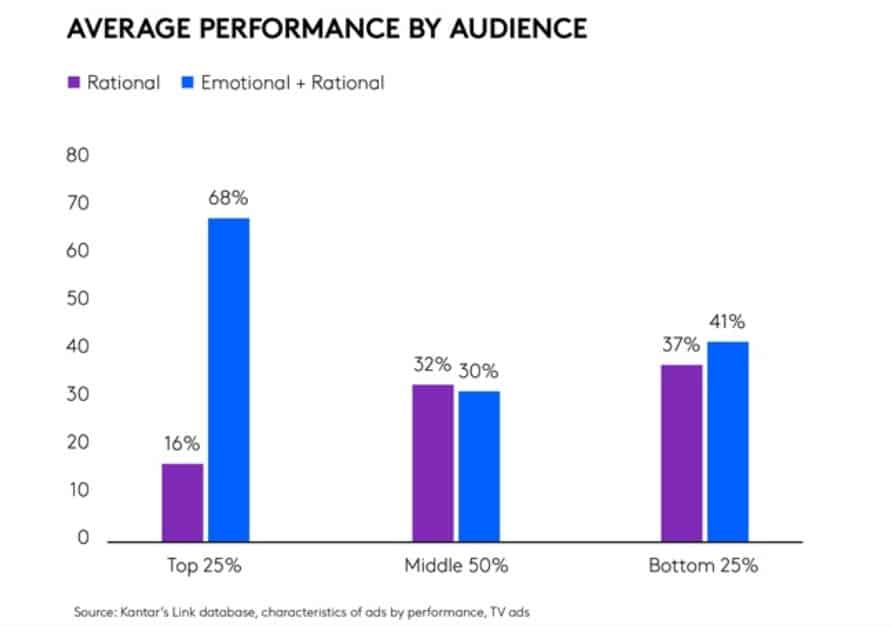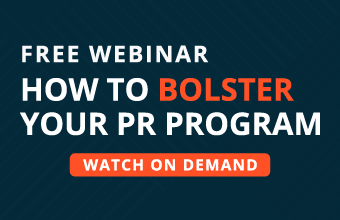Unveiling your new product to the world only to hear the sound of crickets is every business’s worst nightmare. An engaging and interactive virtual product launch—bolstered by careful planning and effective promotional campaigns—can create the hype and buzz you need.
Capable of sparking interest and driving demand for your product, virtual events can attract new leads, boost engagement, and generate more sales on launch day and beyond.
Whether you’re hosting a live virtual webinar or a social media launch, we’ve put together nine tips to help you launch your new product successfully. But first, let’s explore the meaning of a virtual launch event.
What is a virtual product launch?
A virtual product launch is an online event that companies use to introduce and promote their new product to prospects, customers, influencers, media, and industry experts.
Unlike a traditional product launch—which takes place in person—a virtual product launch leverages digital platforms to create engaging, interactive virtual experiences. This could be via live or pre-recorded webinars, presentations, product demos, and social media campaigns.

The goal of a virtual product launch is to capture your target audience’s attention, generate leads, and create a buzz around your new product. Ultimately, you want to encourage customers to engage and convert on launch day.
How to launch a product virtually: 9 winning tips
Virtual product launch strategies combine planning, strategy, and creativity to boost reach, engagement, and revenue. So, let’s discuss how to plan a virtual launch event, from identifying goals and choosing platforms to the promotional strategies you should leverage.
1) Identify your goals, budget, and timeline
Every successful virtual product launch begins with a comprehensive plan that outlines your goals, budget, and timeline.
Start by identifying your goals and objectives. Do you want to drive sales? Generate new leads? Build brand awareness? Your goals help to guide your other decisions, such as what platforms you’ll use, what kind of marketing materials you’ll create, and what KPIs you’ll need to track.
Once you’ve set your goals, establish a realistic budget. Take into account the costs of platforms, production, marketing, advertising, and labor. This will help you track your expenses, avoid unexpected budget overruns, and strategically allocate resources toward high-priority areas.
It’s worth undertaking business capability mapping to get a better idea of your business’s potential for product launch success.
Now that you’ve established goals and budgets, use project management software to develop a timeline that outlines each step in your process. Set clear start dates, milestones, deadlines, and end dates, and assign tasks to keep your strategy organized and on track.
2) Define your ideal customer
To create a product launch that attracts, engages, and resonates with your target audience, you need to know exactly who they are. Remember, what may be a successful branding style for Japanese consumers might not land with American buyers. You need to tap into the specific needs, behaviors, and preferences of your audience to ensure a successful virtual product launch.

Using market research and existing customer data, aim to answer the following questions:
- What are the demographics of your target market (age, income, occupation, etc)?
- What platforms do your audience use?
- What pain points do your customers have, and how does your product solve them?
- What kind of messaging do your audience prefer and engage with most (blog posts, emails, social media content, etc)?
- When is your target audience most likely to be available to attend a virtual product launch?
If your product launch is targeting B2B customers, you’ll also need to identify firmographics such as the company size, industry, and structure. This will help your B2B prospecting efforts, where you’ll need to identify potential cold leads and target them with hyper-personalized, value-driven messaging.
From here, you can create buyer personas and ideal customer profiles (ICPs) that help you find and target the right audience. Ensure that marketing and sales are aligned on which customers to target—enterprise VoIP solutions can make cross-team collaboration more effective.
3) Choose the right platform to host your product launch
If you want to host a product launch event, you’ll need to choose a platform that’s fit for purpose.
Consider customer preferences, accessibility, and ease of use, along with any technological requirements, customization capabilities, and integrations. The type of event that you want to launch will also impact the platform you choose.
If you want to host a live event, live-streaming platforms like YouTube Live, Facebook Live, and Zoom allow you to broadcast your content in real time. They’re a cost-effective option for hosting live webinars and presentations, where you can demonstrate the value of your product and communicate with attendees in real time.
You could also use a dedicated webinar platform or virtual event platform, like VFairs or Dreamcast. The latter have specialized product launch features, such as personalized branding and integrated order forms.

Screenshot taken from VFairs.com
Of course, virtual product launches don’t need to be live. You can create pre-recorded videos on your chosen platform and schedule them to be posted on your launch date.
4) Connect with influencers, industry experts, and partners
Connect with thought leaders, influencers, and partners who can help you market your product launch (and, hopefully, generate extra sales).
- Influencers: Influencers have a ready-made audience of dedicated followers that you can access to increase reach and awareness. So, reach out to suitable influencers with a collaboration proposal. Use proposal software to craft a contract detailing key details such as their deliverables and the campaign period. Then have them sign the contract. This way, you are all on the same page from the get-go and avoid misunderstandings down the line.
- Industry leaders: Industry leaders can endorse your product and even be guest speakers at your live events, boosting your brand’s credibility and customer engagement.
- Press and journalists: A strong press release that intrigues the right journalists and editors can lead to massive exposure. Research the publications and blogs that you think will be interested in your new product or features, and write tailored press releases with personalized outreach messages to build authentic media relationships.
- Partners: If you have any business partners, ask them to promote your event on their social channels to get a trust-driving stamp of approval and increase awareness of your event.
An outbound contact centre can help you manage outbound communications across channels, including phone, social media, and live chat. As well as reaching out to partners, influencers, and thought leaders, you can manage communications with cold prospects and customers.
5) Craft a compelling narrative with product storytelling
For customers to truly resonate with and realize the value of your product, they need to connect with it on an emotional, personal level. This means that you can’t just list your product’s technical features and functionalities—you need to focus on what your product can do for your customer.
How does your product resolve their specific challenges and pain points? How does it meet their wants and needs? How will it change their lives for the better?
Use storytelling techniques to craft a narrative that appeals to your audience’s emotions and demonstrates your product’s value in a memorable and relatable way. For example, you might share customer stories or testimonials, or weave in a story about how and why your product was created.
B2B customer purchases are just as emotionally driven as B2C—albeit more subconsciously. In a recent study by Kantar, they found that B2B ads that integrated emotion into their messaging performed better than ads that stuck to rational-based messages.

Image sourced from Kantar.com
Essentially, your messaging should be relatable, authentic, and compelling, centering around your audience’s wants and needs to forge connections and promote real value.
6) Promote your product launch with engaging social media and email campaigns
To spread the word about your virtual product launch, you need to promote it. The best way to do this is to create promotional content that cuts through the digital noise, spreading awareness, building anticipation, and encouraging customers to be online for launch day.
-
Social media
Leverage social media channels to boost customer reach. Using platforms like Facebook, Instagram, and LinkedIn, create a buzz around your launch with intriguing posts that hint at something new and exciting.
Spark curiosity with teaser videos that offer sneak peeks into your product. Just make sure you follow Facebook video advertisement, LinkedIn in-feed video carousel, and Instagram Reels ads best practices, whichever apply. And, share countdowns to remind customers that launch day is looming.
Encouraging shares or mentions—perhaps with an exclusive offer or discount—can stretch visibility even further.
-
Email marketing
Directly message prospects and existing customers with product launch details, event invites, and reminders. Consider incentivizing customers to participate—for example, you might offer an exclusive discount to the first 100 people to register for your virtual product launch event.
Reaching out to B2B prospects directly via email is a sure way to attract attention from potential customers. Not only do B2B marketers rate email as the most reliable channel for driving leads, but 77% of B2B buyers prefer to be contacted via email over any other channel.

Image created by writer, data sourced from Sopro
Just be sure to do your research and craft tailored messages.
7) Leverage blog posts and landing pages to drive engagement
While you don’t want to give too much away, a short blog post announcing your new product launch can drive organic traffic to your site and garner attention. You could discuss key features and benefits, tell your product story, and proactively address any questions or concerns.
The latter is important if you’re introducing innovative features. For example, let’s say you’ve implemented AI-powered features into your communications solution for insurance companies. You might write a series of posts addressing how AI in insurance can help companies detect fraudulent claims. This can reduce wariness around AI and instill customers’ confidence in your brand, convincing them to try out your new feature.
You could also create a dedicated landing page along with—or instead of—blog posts.
Your product launch landing page should tell visitors everything they need to know about your product launch. And, it needs to encourage them to take action, such as registering for your event, placing a pre-order, or signing up for your email list.
A compelling landing page should include the following elements:
- Event details, such as the date, time, and hosts.
- High-quality product images and videos.
- Engaging copy with relevant keywords to optimize the page for SEO.
- Customer testimonials.
- A strong call-to-action (CTA).
- A registration form, pre-order form, or email list subscription form.
8) Make your product launch event engaging and interactive
Just because your product launch is virtual doesn’t mean it can’t include audience participation.
Create an interactive experience that’s memorable and engaging by gamifying your product launch. Interactive elements can be weaved into your promotional content and live events to encourage initial engagement and retain your audience’s attention, delivering an unforgettable experience.
- Quizzes and polls: Along with providing valuable customer insights that can be used to address needs, quizzes and polls are fun, engaging, and interactive.
- Contests and giveaways: Use spin-to-wins, lucky draws, and other games to incentivize leads to sign up for and participate in your product launch. You could offer freebies, exclusive early access, or discounts.
- Live Q&A: For live events, a live Q&A gives audiences a chance to directly interact with your brand, just as they’d do in an in-person event.
- Product simulators: Create an immersive experience with a product simulator that lets event attendees try out your new product features and functionalities.
9) Monitor metrics to gauge product launch success
So, you’ve completed your product launch and want to know whether it was a success. To do this, you’ll need to track and analyze relevant metrics.
This will give you a data-backed idea of how well your product launch campaigns and events performed. And, it gives you insights into what you could improve on for future events.

Here are some metrics that you might track:
- Engagement rates: How many people liked, commented, or shared your promotional content?
- Conversion rates: How many visitors registered for your event or made a pre-order?
- Direct sales: How many customers made a purchase during/after your product launch?
- Leads generated: How many new leads did your launch event generate?
- Event attendance: How many people attended your live event?
- Audience engagement: How many participants interacted with your event?
- Return on investment (ROI): What was the financial return of your product launch?
You can also collect customer feedback via surveys and social listening to gauge sentiments about your launch event and product.
Key takeaways
Executing a flawless virtual product launch requires lots of moving parts that must be compiled together to form a robust strategy. While creating an engaging, interactive launch event is crucial for sales, it’s no good if you don’t have the audience in the first place.
So, focus on targeting the right audience and reeling them in with emotional, educational, and value-driven promotional content via email, social media, and blog posts. Connect with valuable influencers, experts, and partners to expand your reach even further, and monitor metrics to gauge success.



